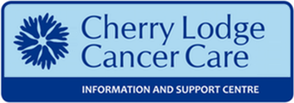Reflexology
Reflexology is an acupressure therapy, whereby a specific pressure technique is applied to particular areas on the feet, or sometimes the hands, of the recipient by the therapist’s finger or thumb. By applying pressure to these ‘reflex areas’, it is thought that the therapist is able to help the body’s own natural healing processes.
How does Reflexology work?
The technique applied to the reflex points on the feet or hands is thought to send a gentle stimulus to the recipient’s neurological and energy systems and via this stimulus it asks the body to return to as healthy a balance as is possible for the individual. Being connected via these systems, each reflex point on the feet or hands corresponds to a different system or organ in the body. By working these specific reflex points, reflexology asks the body to provide extra support to these areas should there be some imbalance there. By working all the reflex areas on both feet or hands, we ask the body to provide balancing support for all systems and all areas.
The effects of Reflexology
Reflexology aids recovery and contributes to well-being by:
- Improving circulation
- Helping relieve aches and pains
- Helping detoxify the body
- Increasing energy levels
- Strengthening the immune system
- Relieving the adverse effects of stress
- Promoting relaxation
- Providing a deep and restful quality of sleep
The many acute and chronic conditions that can be relieved by reflexology include:
- Aches and pains
- Anxiety and depression
- Side effects of cancer treatment
- Eczema
- Asthma
- Irritable bowel
- Emotional trauma
- Hormone imbalance
- Circulatory problems
- Panic attacks
- Constipation
As reflexology works to relax and de-stress the body and mind, any condition that is caused by, or exacerbated by stress is often greatly improved.
How is the treatment given?
A treatment session will last approximately 45 minutes. The recipient may be asked to lie down on a therapy table, or will be treated in a sitting position with their feet raised. The session will usually begin with a foot massage, to promote relaxation and effectiveness. The reflexologist will then work in turn on the reflex areas that are appropriate for a recipient’s needs. To conclude the session, the reflexologist will usually perform another relaxing foot massage. Oils are sometimes used for this final massage but will always be checked with the recipient for suitability.
Post treatment
There are usually no negative effects from the treatment but it is important to be aware that even though the session is complete, adjustments will continue in the body for the next 24 to 48 hours and any symptoms felt are a positive reaction. Due to this healing process, it is recommended that the recipient rests after a treatment and drinks water later in the day to allow the body to achieve the most desirable result.

